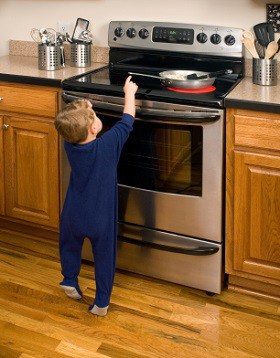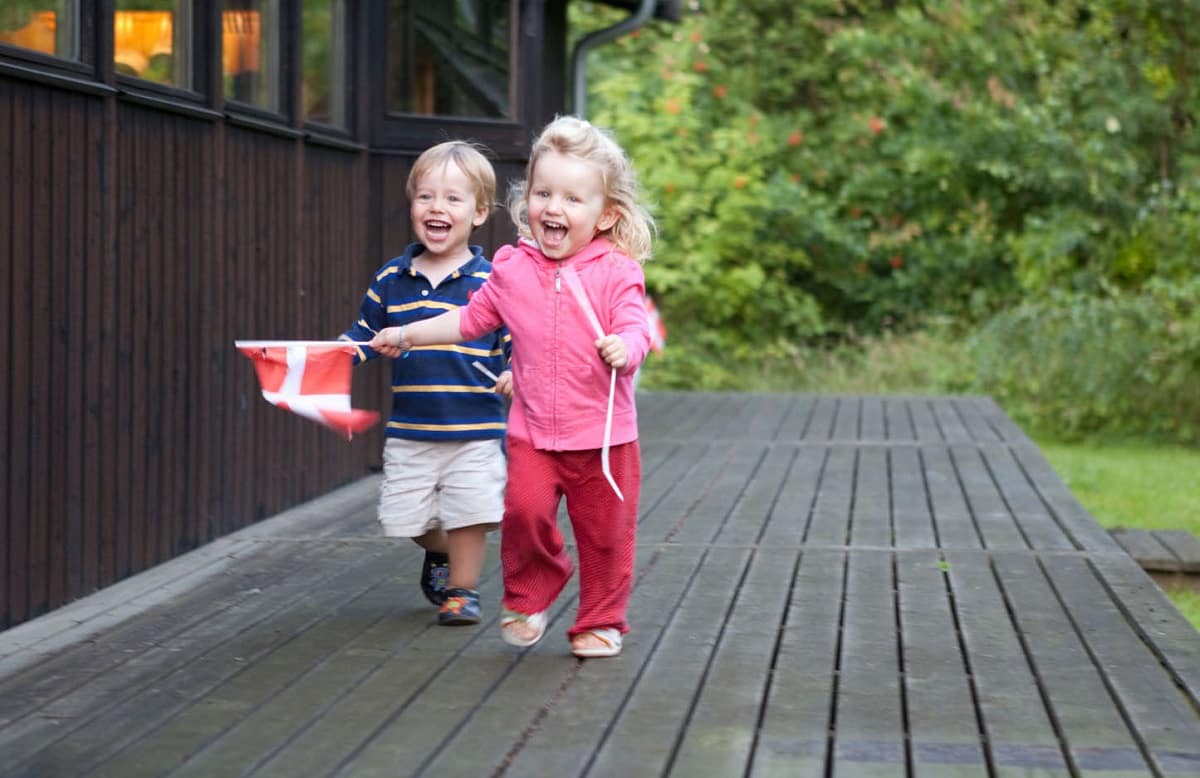There are some milestones that your baby should have reached by now…
Now that your toddler is just over two years old his development will be not as predictable as up until now. Children diverge a lot when they come to this point in the acquisition of new skills. However, there are a few things that you can do to keep him developing healthy and well. There are some milestones that your baby should have reached by now, as defined by the American Academy of Pediatrics.
Your toddlers milestones at 26 months old
The milestones your toddler should have reached are: being able to identify objects that you name, recognizing familiar names, knowing the names of body parts and familiar objects, following short instructions, repeating words, finding a hidden object and play pretend games. Remember that your child is now a preschooler and you have to pay attention to his development. If he is not able to do these things yet, consult his pediatrician for advice. He is the only one who can determine if there is a problem or not. Your input is really important since you are the one who knows best what you toddler is capable of doing.
It is normal if your child follows you everywhere, he wants to watch your every move so he learns everything about the world. It is essential that he sees you expressing emotions so he develops a sense of empathy, so do not hide them from him. If he catches you crying just explain to him why you are sad and ask him for a hug. Show him that everything will get better and he does not need to worry. Sometimes you might lose it and have an angry outburst. If this happens reassure him and try to calm down.
Left handed or right handed?
Usually babies and toddlers use both hands and change between them all the time. Some children keep being ambidextrous, using both hands, until they reach kindergarten.
Although, during his third year you might be able to notice that he starts to prefer one hand over the other when doing tasks that require precision. By now if he uses the same hand to throw a ball, hold his spoon, pickup drawing materials and use toys, you can be almost certain that it will be his dominant hand.
You cannot force him to use one hand or the other, this is counter productive, can slow development of fine motor skills and make him frustrated. Just accept it whether if he is right or left handed, he will be fine either way. Since this is a mostly genetic trait it is more probable for him to go with whatever is more common in your family .
Make your house safe for your toddler
 Your little preschooler is now fully mobile and this means that you have to keep rethinking what possible hazards there are around the house. Since he is taller and stronger he can reach higher places and open drawers and cupboards, even the ones that he could not before. This is dangerous since the unsafe things that you think are well kept safe and away from him. Knives and choking hazards, can now be within his reach.
Your little preschooler is now fully mobile and this means that you have to keep rethinking what possible hazards there are around the house. Since he is taller and stronger he can reach higher places and open drawers and cupboards, even the ones that he could not before. This is dangerous since the unsafe things that you think are well kept safe and away from him. Knives and choking hazards, can now be within his reach.
Try to protect your toddler by locking drawers if you can or buying drawer locks. The things that you cannot lock away try to keep as high as possible and make sure they are out of reach. This includes cleaning products, which are poisonous and can be easily forgotten within reach. You also have to consider that even drawers that contain no dangerous items. A sock drawer in a dresser, can be dangerous if he climb on top of them and topples the furniture. You also have to consider getting rid of that small lake on your backyard, child this age can drown even in the shallowest of waters. It is impossible to keep your little preschooler totally safe. There will always be a little bruised forehead or a scratched knee now and then. Therefore, you should have a first-aid kit always on hand.
Cognitive development
Although children diverge in cognitive development after they reach the age of two, it is expected that until he reaches the age of three he will improve much on his vocabulary. He will understand up to nine hundred words and be able to say up to three hundred. Whether he speaks clearly or cannot make a lot of sense most of the time, you should not worry. Mispronunciations are also normal since it takes a lot of fine motor skills to pronounce words right.
Children this age develop at different paces. This does not mean that he is less smart only because he cannot make conversations in clear and complete sentences. He has to develop language skills at his own pace and you have to keep in mind that this is a complex task. However, there are some worrying signs that you have to watch out for. If your preschooler, barely speaks, does not imitate other people’s words. Likewise cannot pronounce consonants in the beginning of words. Or is not capable of using two to four word sentences and does not ask any questions you should consult your doctor so he can run tests to check if everything is going well.
Social skills at 26 months old
Your child will start to show more interest in playing with other children. Just do not expect for their play time to be so much of an interaction as more like parallel play. It is unlikely that your preschooler will share his toys or build a puzzle together but he will be paying attention to what his little friend is doing even if they are not focused on the same thing. This is a normal part of social development and means that he is building social skills.
To help his development it is best if you encourage playtime in places that are familiar to him and with a small playgroup. It is important for him to feel comfortable around the other children his age. One or two of known children will be enough for playtime. If he shies out and does not seem at ease among other children that is fine too. No two children are alike and he may be more reserved and need more time to adjust to social situations.
Tantrums and discipline
Having your little preschooler following you around all day and doing tantrums now and then can be stressful. This is a good time for you to start imposing some discipline. If your preschooler does something bad on purpose, like emptying a glass of water in the floor, you need to let him know that he should not do it. The best way to do this is to use time-outs as a teaching tool. You should start this by warning your child that what he is doing is wrong. Consequences will follow unless he stops, he has to know clearly what he did wrong. It is important to have a designated place for his time-out and the purpose of this is to be away from your attention, which is the thing he craves most.
You can also have a designated time for his punishment, usually for a two year old a minute is enough. The time-out should end at the end of it for you too. There should be no need to keep going on about the thing he did wrong, just move on to the next activity.
Check on your next months toddler / child development, milestones & stages
12 Months Old – 13 Months Old – 14 Months Old – 15 Months Old –
16 Months Old – 17 Months Old – 18 Months Old – 19 Months Old
20 Months Old – 21 Months Old – 22 Months Old – 23 Months Old
24 Months Old – 25 Months Old – 27 Months Old
28 Months Old – 29 Months Old – 30 Months Old – 31 Months Old
32 Months Old – 33 Months Old – 34 Months Old – 35 Months Old


